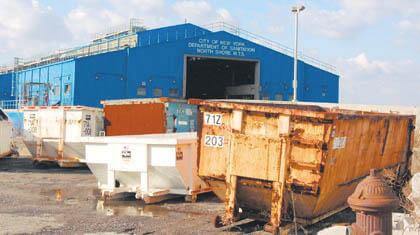By Connor Adams Sheets
The U.S. Department of Transportation announced last week new safeguards to prevent airplanes from hitting birds over and near the trash transfer station the city Sanitation Department is currently building in the College Point Corporate Park, about 2,000 feet from LaGuardia Airport’s eastern runway.
The additional safety measures come in response to a June 2009 meeting between U.S. Reps. Gary Ackerman (D-Bayside) and Joseph Crowley (D-Jackson Heights) and U.S. Transportation Secretary Ray LaHood, during which the congressmen warned LaHood of the dangers the facility could pose to aircraft.
“Although we remain opposed to this garbage transfer station being constructed so close to LaGuardia’s runway, we applaud these additional safeguards,” Ackerman said in a statement.
LaHood requested the study after he learned during the meeting that the facility could attract birds and increase the threat of airplane-bird strikes similar to the one that halted the the engines of US Airways Flight 1549, forcing Capt. Chesley Sullenberger to make an emergency landing on the Hudson River last January.
The Sanitation Department, with input from the city, Federal Aviation Administration, U.S. Department of Agriculture, U.S. Air Force and Port Authority of New York & New Jersey, conducted a study looking at bird hazards at the site after LaHood requested it and found that if the additional safety measures it suggests are adopted, the station will not attract birds.
“I appreciate the U.S. Department of Transportation’s response to the concerns raised by myself and Congressman Ackerman,” Crowley said in a statement. “There’s no doubt these new safeguards will help to better protect air travelers and those living around LaGuardia Airport.”
New safeguards will be instituted during construction and operation of the facility. They include creating a wildlife hazards management plan, eliminating perching sites, a no-feeding policy for nearby animals, use of landscaping plants unattractive to wildlife, providing a dedicated wildlife-control professional, monitoring of trash containers and monitoring of barge activity.
The new protections come in addition to a new bird-strike plan Ackerman and Crowley recently helped get the FAA to agree to implement. That plan will require the USDA to monitor all bird activity around the trash facility by bringing an on-site biologist to visit the spot once a week for the first two years it is in operation.
If the biologist discovers there is an increase in bird activity, the site will be shut down by the FAA until the bird volume is reduced again.
The trash facility, slated to open in 2012, will be 100 feet tall and handle about 3,200 tons of trash each day.
The National Safety Board is looking at lessons from last year’s “miracle on the Hudson” crash and may consider new restrictions and requirements to better protect fliers from bird strikes, according to the New York Post.
Reach reporter Connor Adams Sheets by e-mail at csheets@cnglocal.com or by phone at 718-260-4538.



































